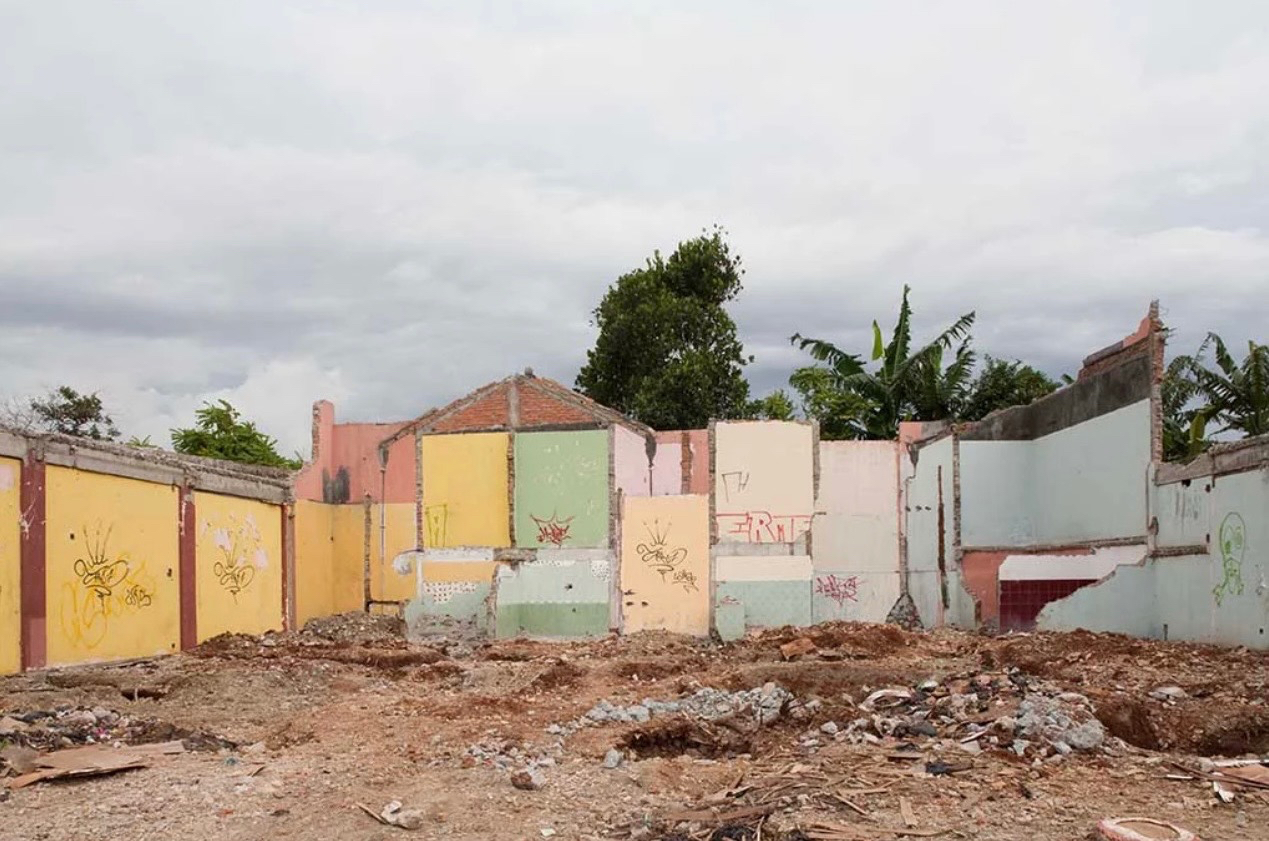From issue: #16 Street
written by Sabrina Citra
Ary ‘Jimged’ Sendy’s (born 1978) daily commute into central Jakarta accustomed him to the landscape of ruins along the banks of the Ciliwung river: loose concrete and shards of ceramic laid bare on the muddied land, graffitied walls the vestiges of broken homes. The structures were once homes, Jimged told me in a video call. He recalled witnessing their incremental mass demolition, each house disappearing one by one over the course of two years. The process of removal was resisted by residents, but their efforts always resulted in defeat.
The demolitions were to make way for the ongoing construction of the East Flood Canal. Canals have been integral to Jakarta’s fortification against flooding for more than a century, allowing it to become codified into the city’s development plan. They were built incrementally throughout the different districts of Jakarta to protect the city, yet their construction has imbued a never-ending cycle of displacement towards its citizens.
‘I’ve always believed that what makes a home are its residents and their routines, rather than its actual structure,’ Jimged says, as he assembles a snack of white bread and chocolate spread during our call. His attempt to portray the effects of demolition began with imagining what the homes were like before being reduced to rubble. In between chews, he lists what he could recall of his research questions: ‘How did their lives look in this space? Who stayed in these bedrooms? What music were they listening to? Is this the kitchen and if so, what did they enjoy cooking? Why’d you think they coloured the walls pink or green?’ Constant exposure to, and engagement with, the debris allowed Jimged to become intimately familiar with the ruins and their surroundings, including the positioning of the light and the gradients of grey clouds. The resulting photographic series, Traces of Home (2010), was an attempt to piece together the memories of those displaced.
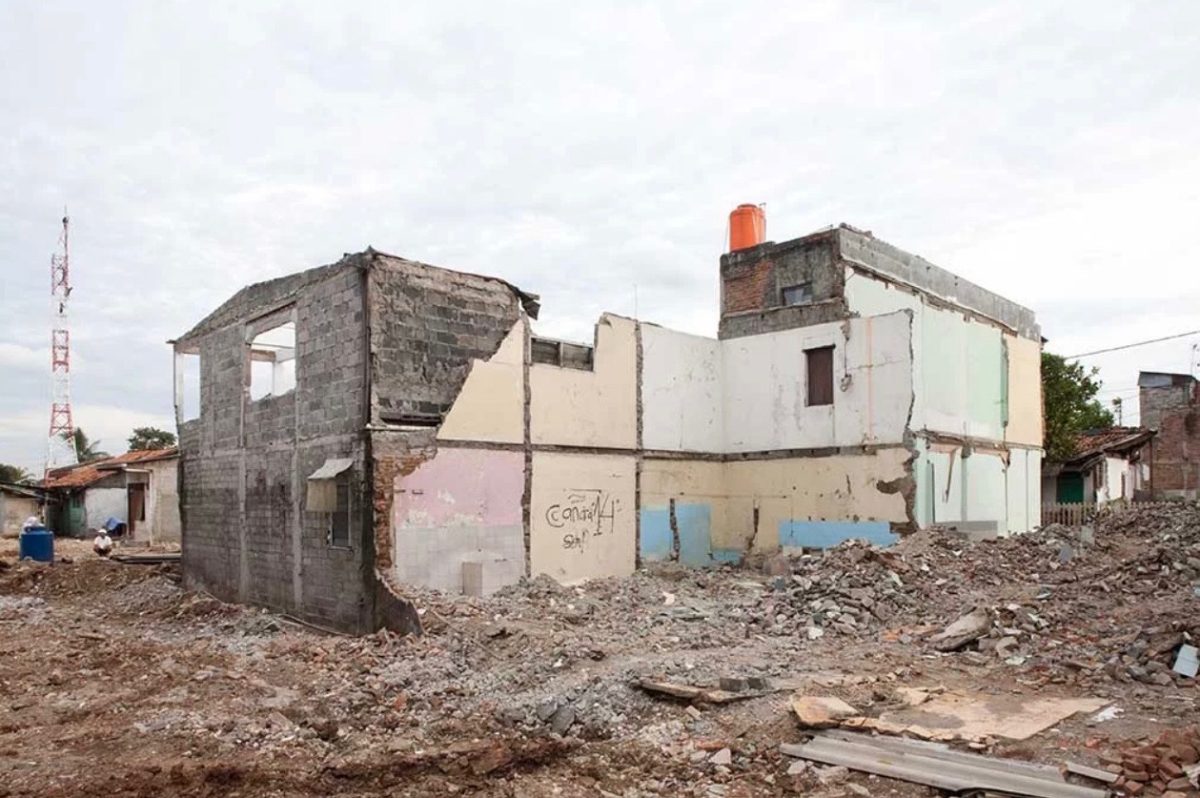
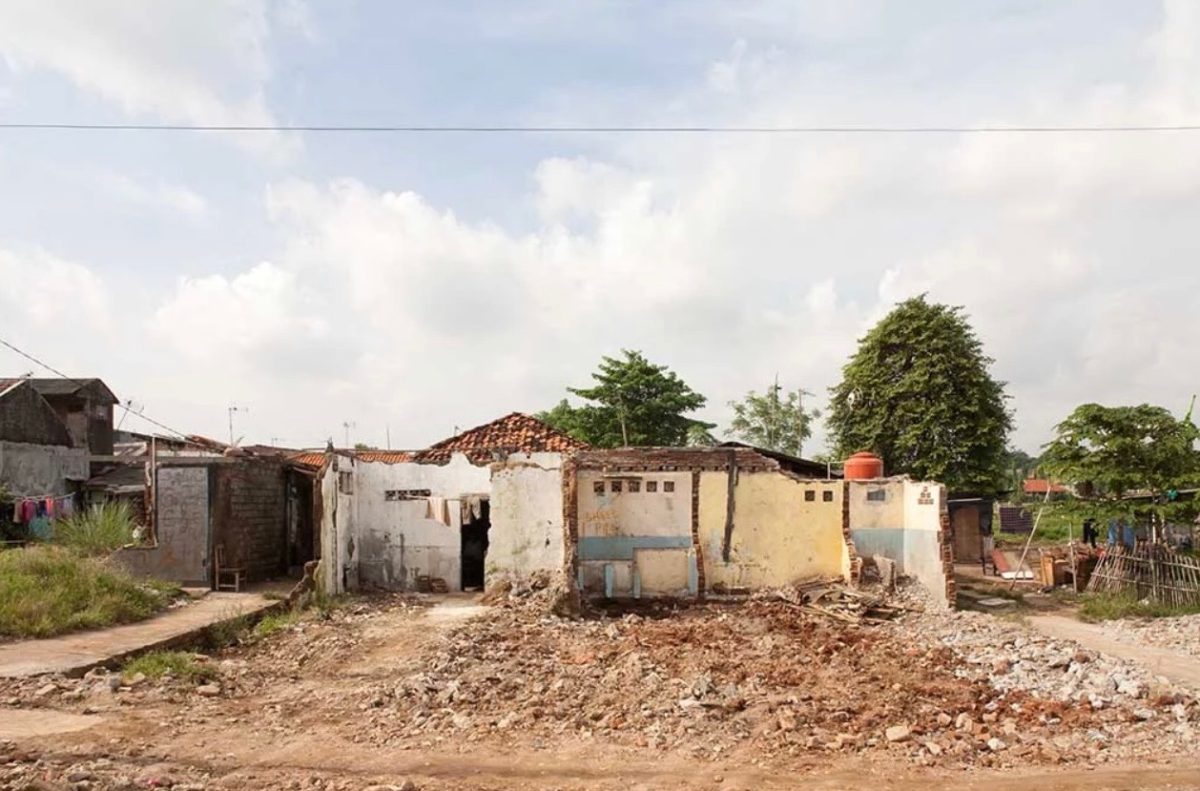
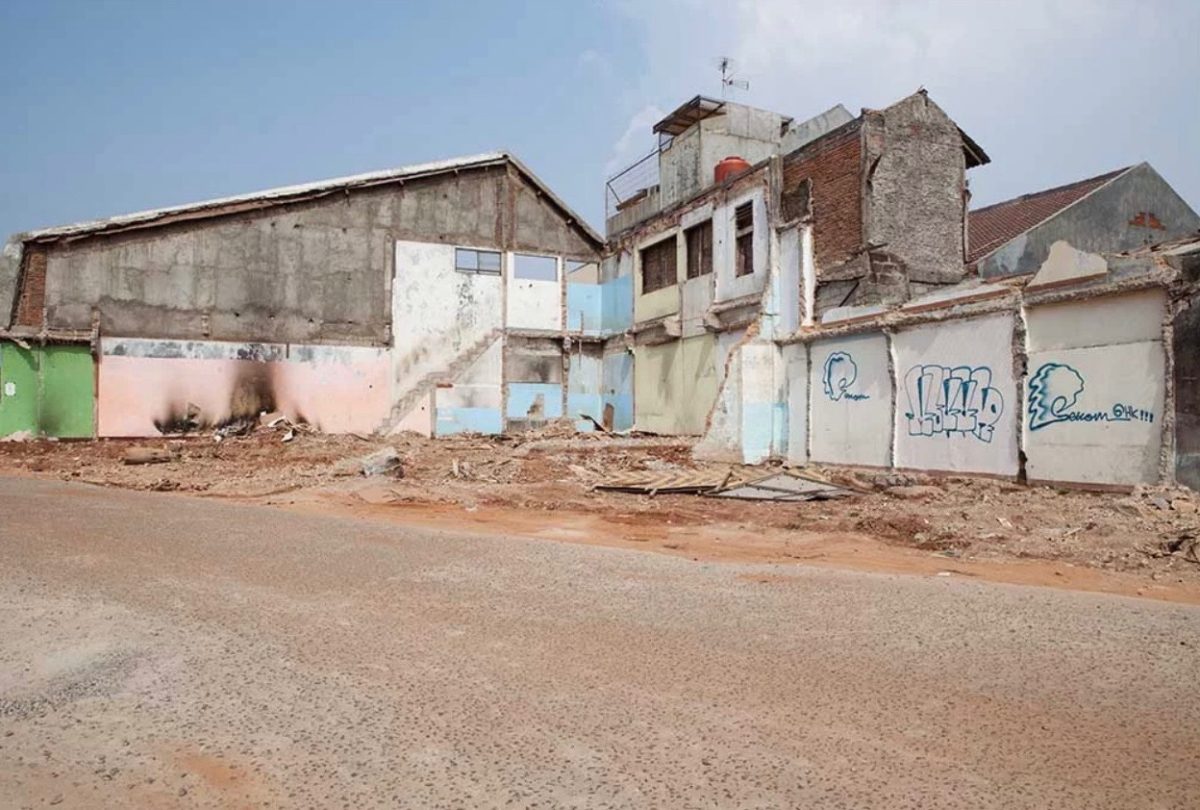
The thirteen photographs that comprise Traces of Home capture the multiple demolitions that occurred, from Bekasi to central Jakarta. Each image depicts a different process of removal, which conveys Jimged’s intent to imbue each photograph with its own individual narrative. ‘When they’re pulled apart, I’d really like for each picture to stand on its own because they have separate stories to tell,’ he says. Jimged sought to pay homage to the personal experiences of demolition, rather than to congeal them into a singular narrative. Each image functions almost as a fragment, mimicking the recollection of memory.
Traces of life remain within the documented ruins: dirtied shirts hanging on a washing line, a seemingly unscathed orange water tank, a crooked television antenna hanging off a collapsed rooftop. These artefacts memorialise the routine of the former residents and grants the viewer a glimpse into their histories.
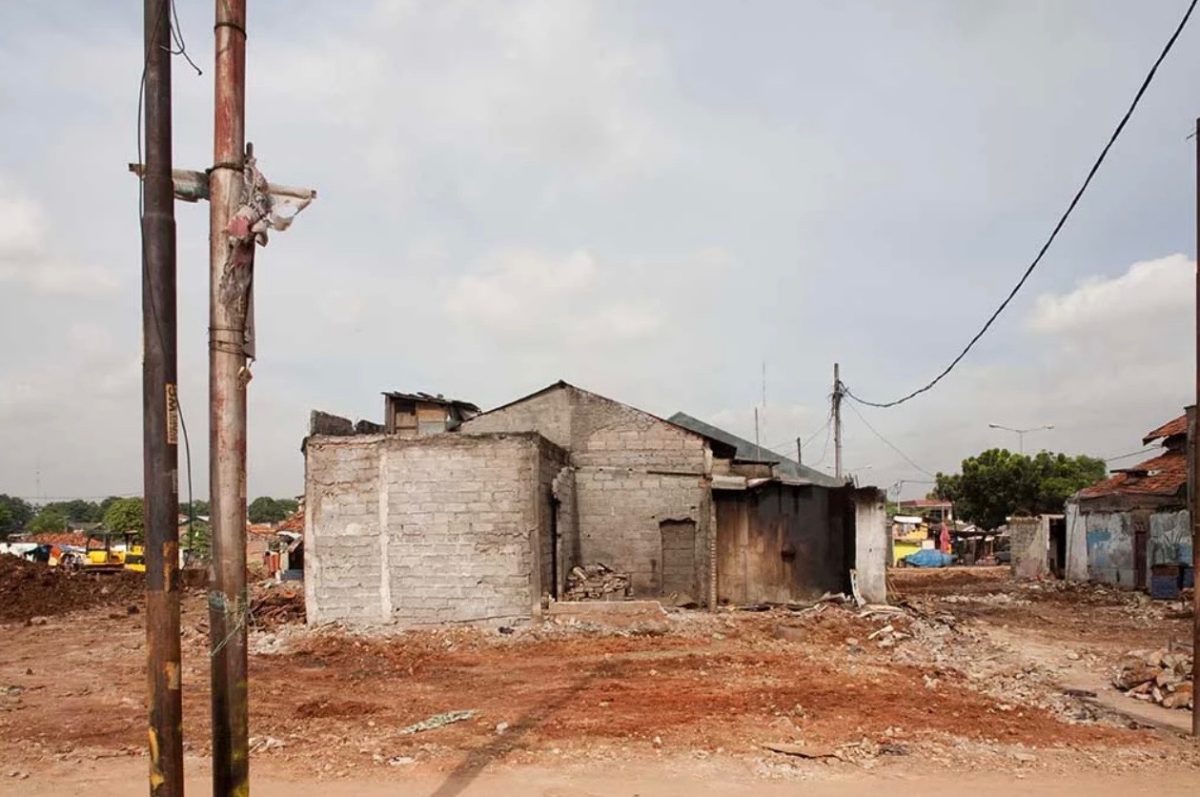
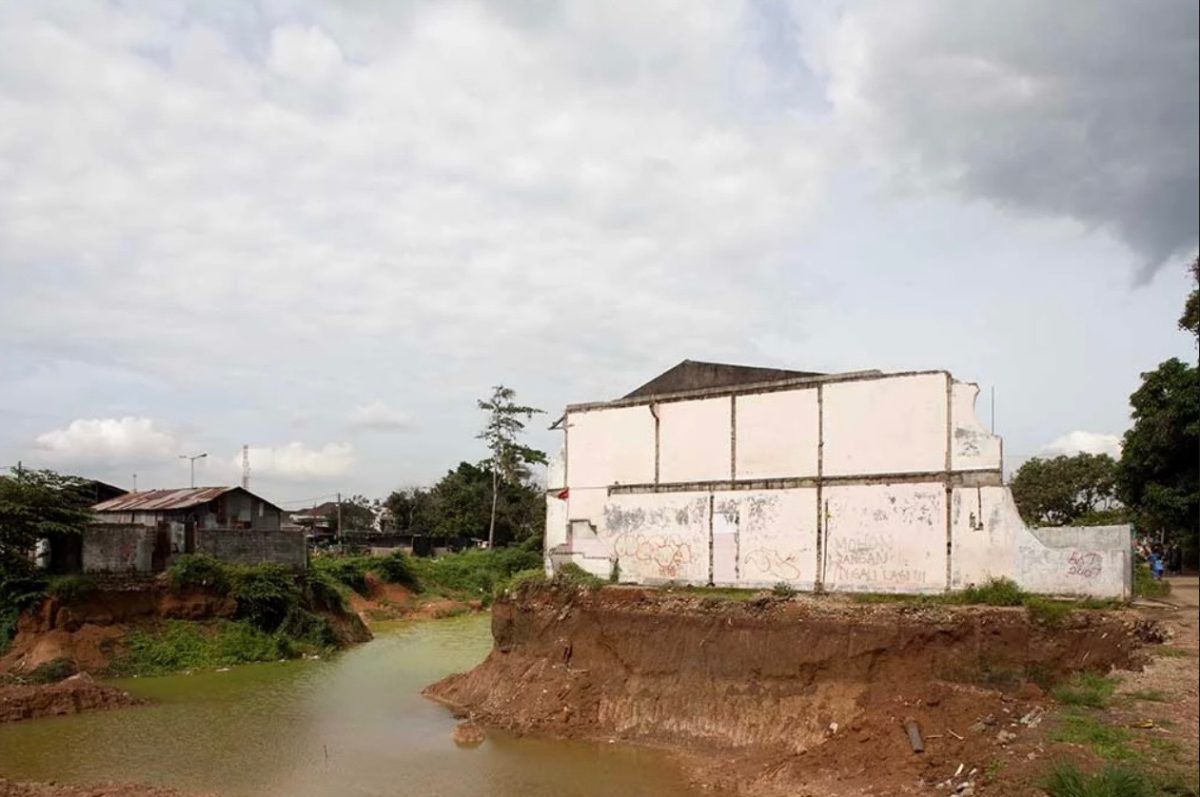
Although there is a clarity to these images, Traces of Home does not offer a definitive or easy explanation of the processes of demolition and displacement. In fact, the fragmented nature of the series mimics the complexity of reality and calls for a deeper reflection on the issues of gentrification. To what extent can we as viewers grasp this reality? Can the visual evidence afforded by Jimged’s images augment our comprehension?
The difficult task of answering these questions begins with an awareness of our positionality. We, alongside Jimged, have become distant witnesses of the demolition sites. To bear witness does not automatically confer the intimacy of experience, but this shouldn’t imply a complete erasure of the experiences of the displaced. In the words of Jimged, an attempt to imagine their lives becomes a way of engaging with the processes of change that have been overlooked. Engaging with the effects of displacement rather than attempting to articulate the process offered him new insights into the experience.
Traces of Home is Jimged’s testimony about the processes of change that have shaped Jakarta. ‘I was trying to put my own spin to it,’ he says, ‘to take the vastness of change (within the city) and to relate it to my life.’ His childhood revolved around constant cycles of removal, renovation, and reconstruction, such that he grew increasingly immune to its consequences. ‘Displacement becomes banal when you grow up in a city like Jakarta,’ he explains. With these photographs, he briefly pauses the infinite rhythms of change, allowing for a reflection on his history and the history of Jakarta through the unmaking of Jakarta’s streets.
